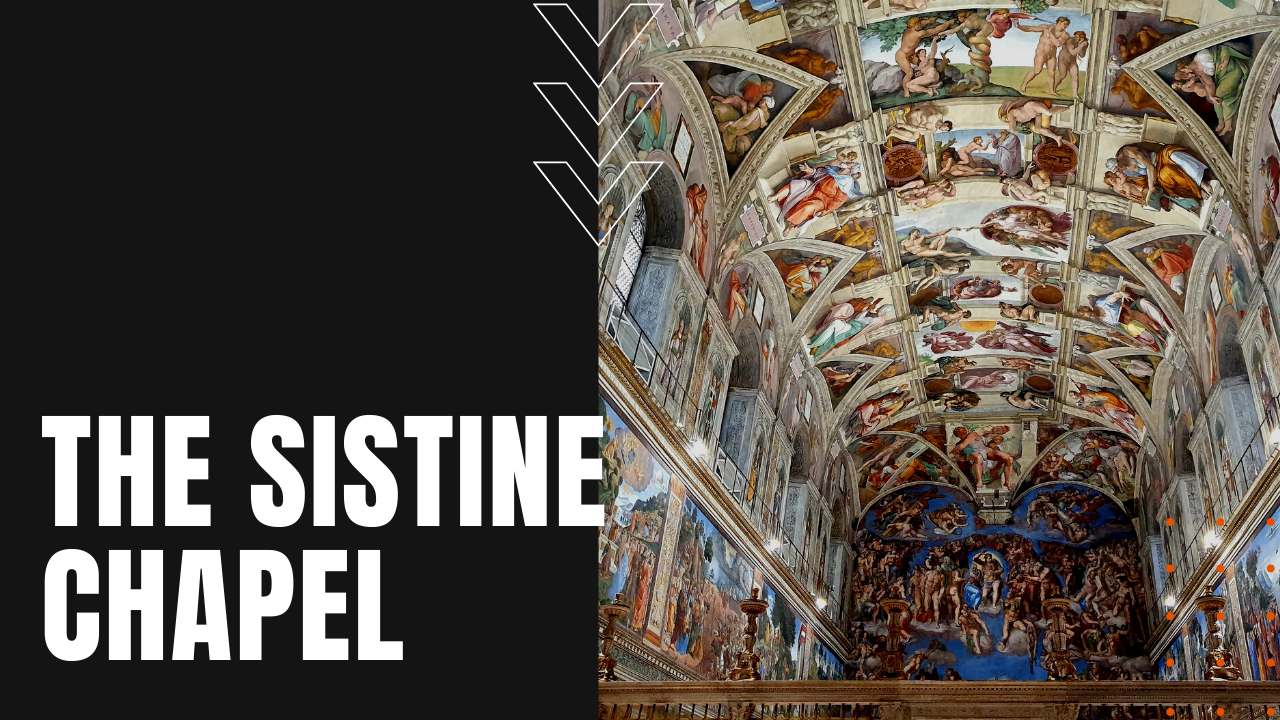The Sistine Chapel: Commission, Ceiling, Consternation, and Censorship

Considered the Pope’s personal chapel, tucked away inside the Apostolic Palace in Vatican City, Italy, the Sistine Chapel takes its name from Pope Sixtus the Fourth, who built it between 1473 and 1481.
Since its construction, the chapel has served as a place of both religious and functionary papal activity, including the papal conclave, which is the process by which a new pope is chosen.
Who Painted The Sistine Chapel?
After construction was completed, Sixtus commissioned a team of Renaissance painters, including Sandro Botticelli, Pietro Perugino, Cosimo Rosselli and more to create a series of frescos depicting the Life of Moses and the Life of Christ, which were completed on August 15th, 1483, in time for the chapel’s consecration on the Feast of Assumption.
Between 1508 and 1512, under the patronage of Pope Julius the 2nd, a reluctant Michelangelo painted the chapel’s ceiling, which changed the direction of Western art, and is now regarded as one of the major artistic accomplishments in Western civilization.
Michelangelo’s Sistine Chapel Ceiling
Protesting to friends and pope alike that he was a sculptor and not a painter, and despite the popular misconception that Michelangelo painted the ceiling lying on his back atop scaffolding, the painter in fact created his masterwork standing upright, spending four long years with a paintbrush raised over his arched and constantly-aching head and neck.
Working on the Sistine Chapel was so unpleasant that Michelangelo wrote a poem about it, recounting how his “face makes a fine floor for droppings,” while his “spine’s all knotted from folding myself over.” He ended the poem with an affirmation that he should have kept his day job, which was building a marble tomb for Pope Julius the 2nd, adding
“I’m not in the right place—I am not a painter.”
Michelangelo
Nevertheless, his completed masterwork includes more than 300 figures, with a painted surface area of 131 feet in length by 43 feet wide, which works out to a staggering 5,000 square feet of frescoes.
Michelangelo returned to the Sistine Chapel from 1535 to 1541, painting the Day of Judgement behind the altar of the chapel, which depicts the second coming of Christ as described in the Revelation of John in the New Testament. The work would be bitterly contested by Cardinal Carafa—later known as Pope Paul the 4th—for its blatant nudity, igniting a censorship movement known as the “Fig-Leaf Campaign,” which eventually resulted in all genitalia painted over by artist Daniele da Volterra, whom history remembers by the derogatory nickname “Il braghettone,” or “the breeches-painter.”
